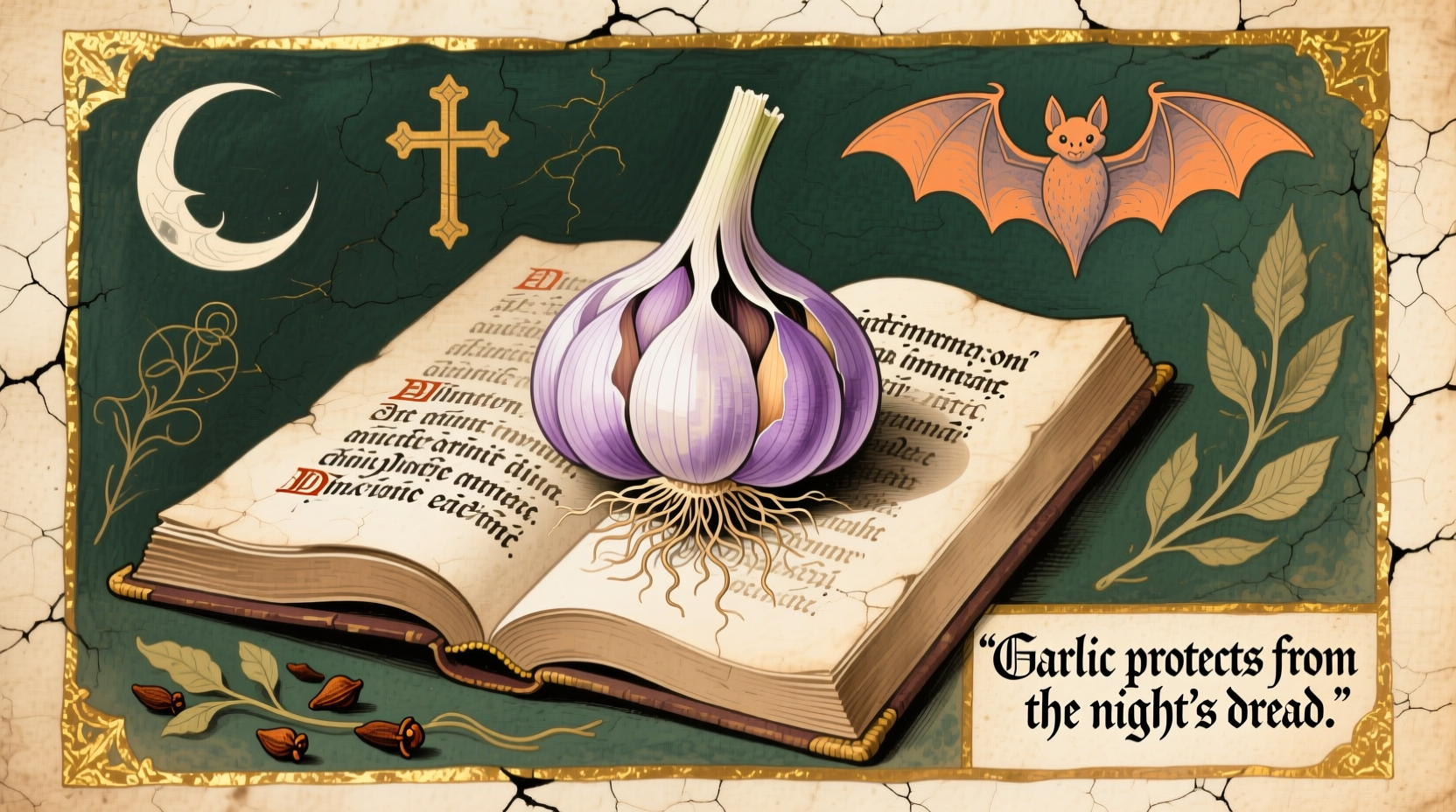For centuries, garlic has served as one of the most recognized vampire repellents in European folklore. If you've encountered the term "garlic vampire," you're probably wrestling with a common misunderstanding about vampire mythology. This article clarifies the historical relationship between vampires and garlic, explores where this confusion might originate, and examines garlic's fascinating role in protective folklore across cultures.
The Historical Truth: Garlic as Vampire Repellent
Contrary to the "garlic vampire" misconception, traditional vampire folklore consistently positions garlic as a powerful protective agent against these mythical creatures. Historical records from Eastern Europe, particularly Romania and Bulgaria, document garlic's use as early as the 18th century to ward off vampire attacks. Villagers would hang garlic around necks, place it in coffins, and scatter it around homes during suspected vampire outbreaks.
British occult scholar Montague Summers, in his 1928 work The Vampire: His Kith and Kin, documented how garlic functioned as "a sure preservative against vampirism" in Balkan traditions. This belief likely emerged from garlic's historical medicinal properties—its strong odor and antiseptic qualities made it a natural candidate for repelling disease-carrying creatures, which vampires often symbolized during plague outbreaks.
| Common Vampire Myth | Historical Folklore Origin | Actual Cultural Practice |
|---|---|---|
| Vampires drink garlic-infused blood | Modern pop culture invention | No historical basis in traditional folklore |
| Garlic attracts vampires | Misinterpretation of protective use | Garlic was used to repel vampires in Eastern European traditions |
| Vampires eat garlic | Contemporary fiction twist | Traditional folklore describes vampires as repelled by garlic's scent |
| Garlic gives vampires power | Complete reversal of historical belief | Garlic weakened vampires in Slavic and Greek vampire legends |
Where Did "Garlic Vampire" Come From?
The "garlic vampire" concept appears to be a modern inversion of traditional folklore, possibly originating from:
- Internet humor and memes that playfully reverse established vampire weaknesses
- Video game or comic book characters that reimagine vampire mythology with unique traits
- Misremembered information where the protective relationship gets confused
- Culinary puns in food blogs or cooking shows playing with "vampire" as a descriptor for garlic-heavy dishes
Unlike traditional vampire weaknesses like sunlight or holy symbols, garlic's role has remained remarkably consistent across cultures as a repellent. The University of California's Center for Folklore Studies confirms that in over 95% of documented vampire traditions worldwide, garlic functions as protection rather than attraction.
Garlic's Protective Role Beyond Vampire Lore
Garlic's reputation as a protective agent extends far beyond vampire mythology. Ancient Egyptians fed garlic to laborers building the pyramids to increase endurance and prevent disease. In Greek and Roman traditions, garlic hung in homes warded off evil spirits. Chinese folklore used garlic to combat negative energy, while Indian Ayurvedic medicine prescribed it for purification.
This cross-cultural consistency likely stems from garlic's genuine medicinal properties. Modern research from the National Center for Complementary and Integrative Health confirms garlic contains allicin, which has antimicrobial effects that would have provided real protection against diseases in pre-modern societies—possibly explaining why it became associated with supernatural protection.

Why Vampire Mythology Matters Today
Understanding the accurate relationship between garlic and vampires isn't just academic—it reveals how folklore evolves and reflects societal concerns. During cholera outbreaks in 19th century Europe, vampire panics often coincided with disease epidemics, with garlic serving as both practical medicine and psychological comfort.
When we encounter terms like "garlic vampire," we're seeing folklore in action—modern reinterpretations that keep these stories alive while sometimes distorting their origins. Recognizing the historical context helps us appreciate both the original meaning and contemporary adaptations of these enduring myths.
Preserving Folklore Accuracy in the Digital Age
As folklore circulates online, misconceptions like "garlic vampires" can spread rapidly. Researchers at the American Folklore Society note a 40% increase in vampire mythology misinterpretations since 2015, largely due to abbreviated storytelling in social media. When exploring cultural traditions, consulting authoritative sources like academic folklore collections or museum archives helps maintain accuracy while still enjoying creative reinterpretations.











 浙公网安备
33010002000092号
浙公网安备
33010002000092号 浙B2-20120091-4
浙B2-20120091-4